During the weekend of 28 February 2015, my wife and I witnessed one of the most overwhelming wildlife spectacles I ever came across in Belgium: around one million Bramblings coming to a roost in a very small forest patch in Witry.
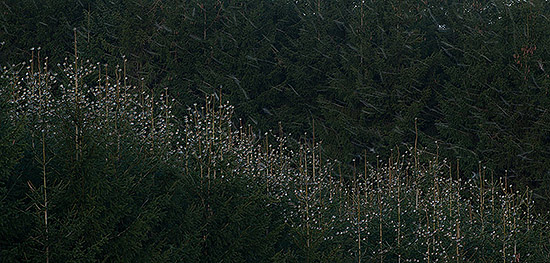
In years of cyclic abundance following successful breeding seasons, huge numbers of Bramblings move over wide areas within West, Central and South Europe, with huge concentrations especially in South Germany, Switzerland and Austria, where estimated flocks of more than 10.000.000 individuals may gather at one roosting place. This mind-blowing phenomenon happens during winters with abundant supply of beechmast. Although these gatherings have mainly been documented in the continental beech forests of the submontane regions adjacent to the Alps, some keen birders managed to find a massive roosting place in Belgium in 2015. The dormitory was located in a very small Picea abies forest of a few hectares, adjacent to the large beech forests of Anlier and further Southwards of Orval, where the birds were foraging in large numbers during daytime. During the last two weeks of February, local birdwatchers estimated that up to one million birds were coming to sleep in the particular Norway Spruce forest. About ten years ago, during a mast year, sightings of massive groups of Bramblings suggest there must also have been also a similar dormitory in Wallonia, but then the phenomenon wasn't documented as precisely as in 2015.
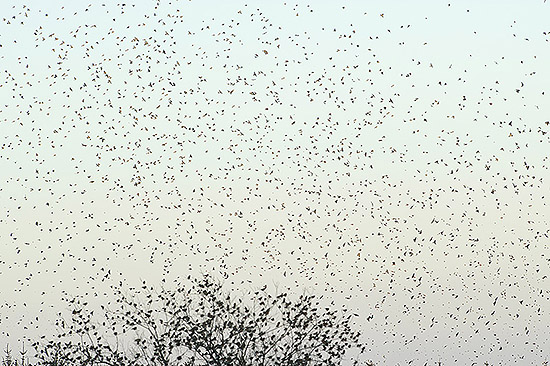
Building up to one million birds
Here‘s a description of how the spectacle was built up and how we experienced it.
Around 4:15 p.m., along the highway through the vast beech forest of Anlier – but still fifteen km away from the Brambling Roost, we already started to notice the first groups of hundreds of Bramblings flying northwards in the direction of the roost. Around 4:30 p.m. we reached the spot, where moderately large groups of several hundreds to a few thousands of Bramblings were flying over and prospecting the dorm. Under here an image from the first groups, which were already quite large. The individual birds were at that time still flying at a reasonable distance from each other, which gave the flocks a thin appearance and the flights seemed moderately orderly.
The first thin groups arriving.
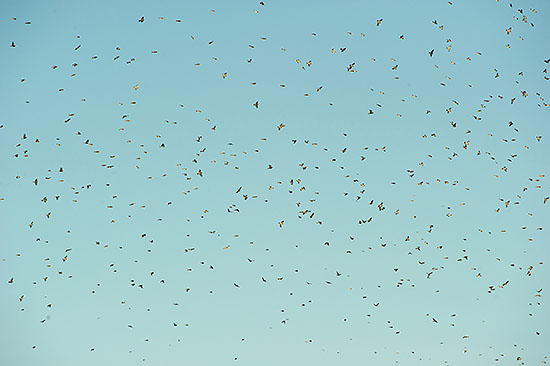
When scanning the horizon, tens of dozens of similar groups of hundreds of Bramblings seemed to be prospecting the wide surroundings. From time to time the ordered structure of a flight was smashed apart by a diving Goshawk, Sparrowhawk or Peregrine. Two times a Hen Harrier attacked a flight as well and the flocks were mobbing a few times a Common Buzzard.
As time went by, the groups slowly became larger, more compact and the chaos and interaction between the flights increased.
Groups are starting to fly in all directions and through each other.
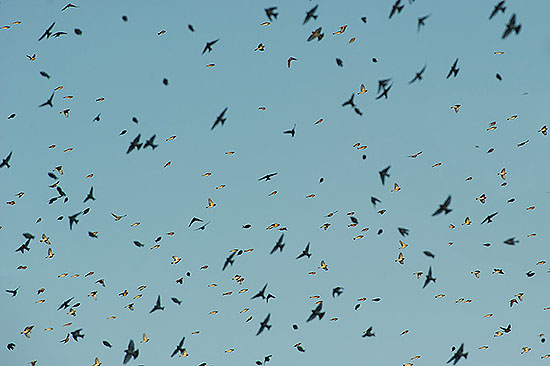
Groups are getting more compact.
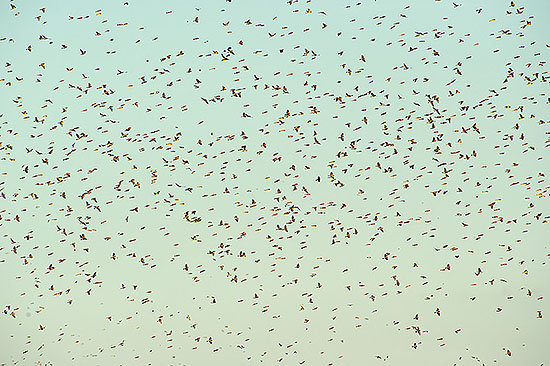
The sky filling up with several groups, the tiny blur spots on the background are Bramblings belonging to other groups.
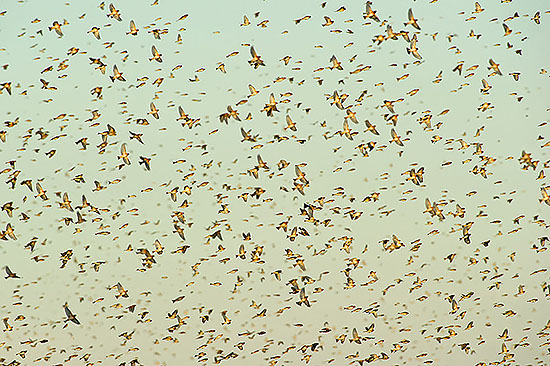
Although the flocks were seemingly still mainly flying over and they would often disappear again in the wider surroundings, more and more birds came in to fly low over the dorm and the first birds started to land in the spruce trees around 5:15 p.m. By 5:30 p.m. we had climbed up a small slope, which gave us a view a little above the dorm and the surrounding forest. The spectacle we noticed was simply mind-blowing: the entire sky was filled over a range of a few kilometres with Brambling flights who started to form more compact groups flying towards and finally landing in the spruce trees. At least a few hundred thousand birds were now filling the sky. When observing the distant birds bare eye, it was as if thousands of giant mosquito swarms were flying all over the forests. A long wisp of several thousands of birds looked like a smoke plume.
The numbers are growing every minute.
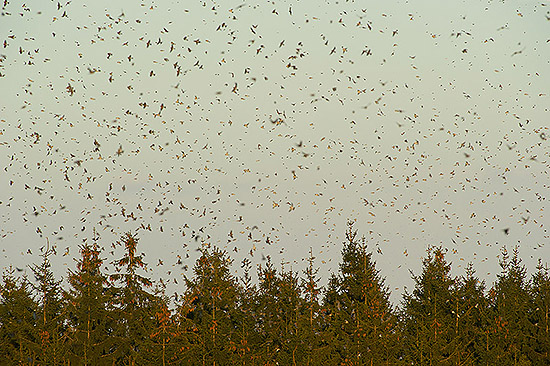
Just before the sun went down, the chaos and numbers of flying birds reaching their climax.

Between 5:45 p.m. and the next half hour the spectacle reached its climax: a few hundred thousand Bramblings were sitting nervously in the treetops of the Spruce and a few deciduous trees. At the same time very long wisps of birds, sometimes up to a few hundred metres long, kept on arriving. About every five minutes a hunting Sparrowhawk or Goshawk showed up and ten thousands of the already landed Bramblings would fly up again and mix with the still arriving flights. The sudden change of direction of an arriving Brambling group was sometimes also enough to make the landed birds flying up again. Although we were watching the spectacle at some distance from the forest, the noise of the hundreds of thousands of Bramblings became more and more impressive. After 6 p.m. light began to fade and photography became much more difficult.
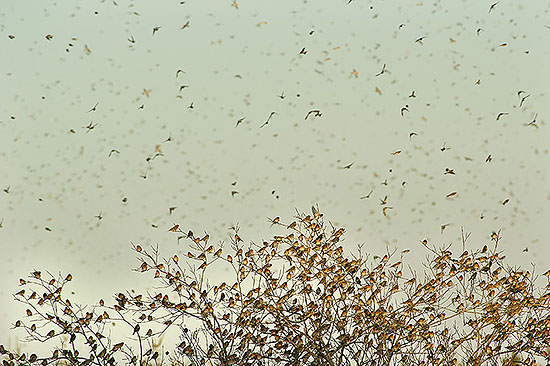
I decided to take advantage of the poor but beautiful light, just after the sun went under to make some low shutter speed images of the landed Bramblings with overflying and landing birds. Under here some of the results.

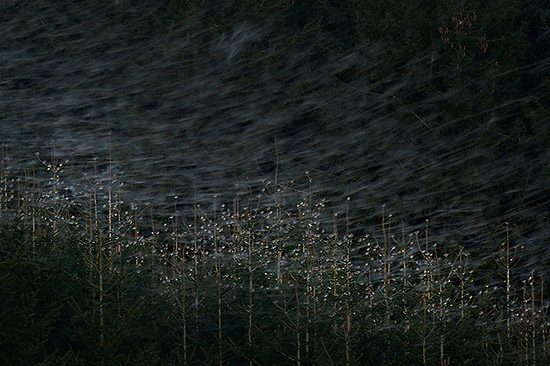
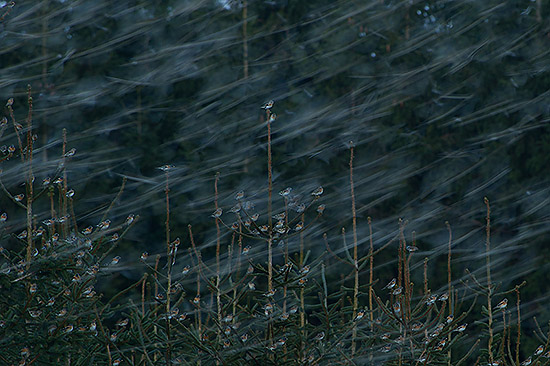
The last fifteen minutes, I took some low shutter speed flight images, in an attempt to capture the atmosphere of the cold winter evening filled with the Bramblings flying in all directions.
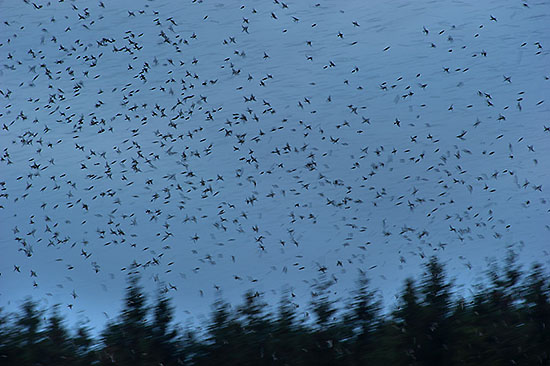
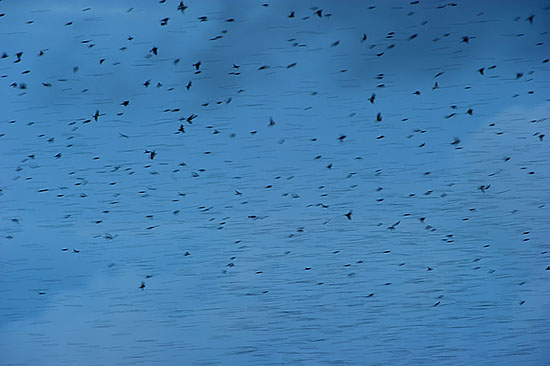

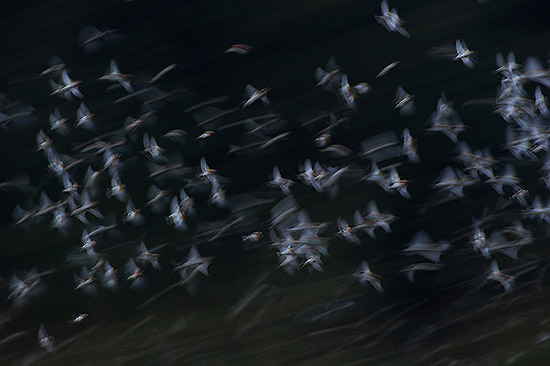
Around 6:20 p.m., during only a few minutes all the birds left the treetops and went to sleep in the dense cover of the lower tree branches. The birds were no longer visible, where only five minutes before hundreds of thousands of birds could be seen in the canopy and in the air. I was really surprised that the spectacle, which took more than an hour to reach its climax, had come to an end so abruptly. Though not any longer visible, the impressive twitter and tweet choirs, which lasted for a while, still revealed the presence of an overwhelming amount of birds...
Finally an abstract image of birds in pannick, and flying very close to each other. The image was made shortly after an attack of a bird of prey.
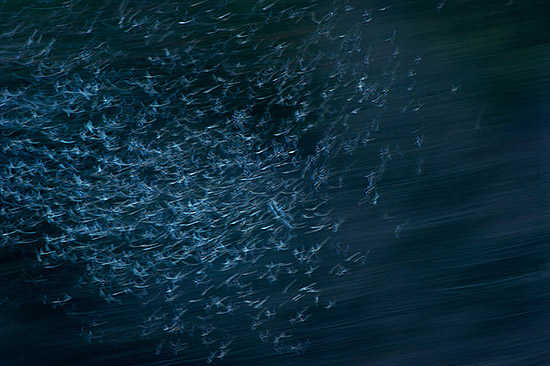
Special thanks to Billy Herman, from Starling and Filip Verbelen, who drew my attention to this fantastic wildlife spectacle.
If you want to take a closer look at all the Brambling images on a larger scale, you can have a look here.
